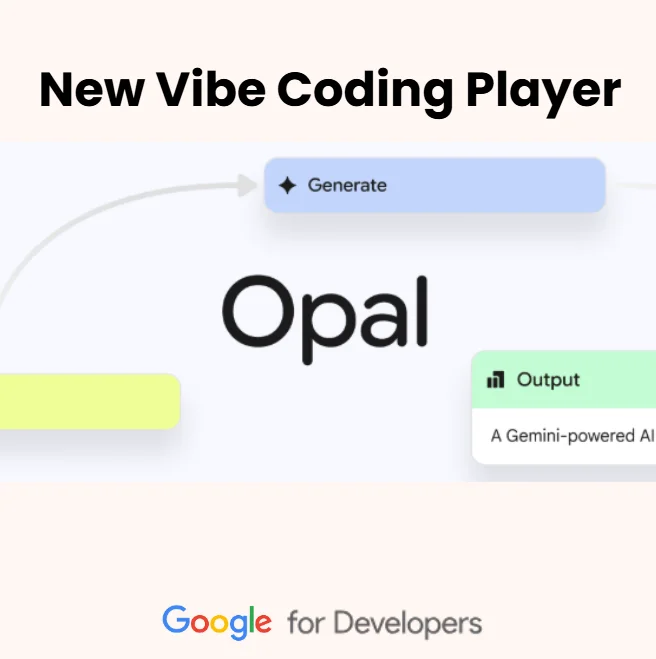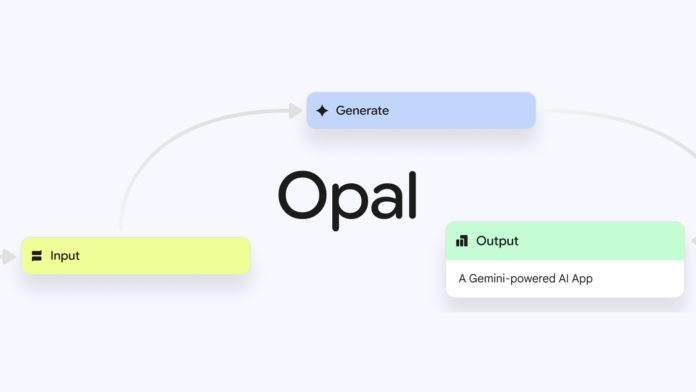Table of Contents
Google’s Opal AI Vibe-Coding App Reaches 15 New Countries
Squaredtech reports that Google has expanded its AI vibe-coding app, Opal, to fifteen additional countries, bringing this innovative tool to users in Canada, India, Japan, South Korea, Vietnam, Indonesia, Brazil, Singapore, Colombia, El Salvador, Costa Rica, Panamá, Honduras, Argentina, and Pakistan. Originally launched in the United States, Opal allows users to create mini web applications simply by typing descriptions of what they want the app to do. This expansion reflects Google’s commitment to empower more creators worldwide to design web apps without needing traditional programming skills.
Opal’s unique feature is what Google calls “vibe-coding,” where users input a text prompt describing their desired app. The app then uses advanced Google AI models to generate the web app according to that description. After creation, users gain access to an easy-to-use visual editor that displays workflows including inputs, outputs, and steps that happen behind the scenes. Users can edit any part of the process, such as tweaking the AI-generated prompt or adding new steps manually with simple controls.
Read More About Our Article of Read More About Our Article of Google AI Futures Fund Backs Startups Building with DeepMind Tech Published on September 17th, 2025 SquaredTech
Megan Li, a senior product manager at Google Labs, noted in a blog post that the U.S. launch surprised the team with the level of creativity and practicality early users displayed. Instead of only simple, fun projects, users built sophisticated and highly functional apps, which motivated Google to broaden Opal’s availability internationally. Squaredtech views this move as a sign that AI-assisted development tools like Opal are advancing rapidly and gaining global traction.
Enhanced Features Make Opal Faster and Easier to Debug

Along with expanding access, Google announced important updates to Opal’s core functions, improving both its speed and usability. Initially, it could take five seconds or more to generate a new app from a text prompt. Now, Google has optimized the process to make app creation faster, encouraging more seamless user experiences when starting new projects.
The update also introduces the ability to run multiple steps of the workflow in parallel. This enhancement allows users to build more complex apps with several automated tasks occurring simultaneously, saving time and increasing Opal’s capability to handle sophisticated workflows.
A standout improvement is in debugging, which Google has upgraded without complicating the no-code interface. Users can now execute their workflow step by step directly in the visual editor, making it easier to spot where problems occur. Errors appear precisely where the issue arises, eliminating guesswork and making fixes more straightforward. Users can also switch to a console view for advanced tweaks if they prefer more control.
Squaredtech sees these improvements as key to maintaining Opal’s accessibility for non-technical users while providing enough power and flexibility for those building advanced solutions.
Opal’s Place in the Growing No-Code AI Tool Landscape
Google’s Opal competes in an expanding market of no-code and low-code development tools designed to lower barriers for app creation. Popular platforms such as Canva, Figma, and Replit also offer features that help users design app prototypes or workflows without writing code. However, Opal distinguishes itself by leveraging Google’s sophisticated AI models to convert plain English prompts directly into working web applications.
This AI-driven approach helps Opal users focus on what they want to create rather than how to technically implement it. Squaredtech notes that this trend reflects a broader shift in software development where AI assists with coding, design, testing, and debugging—making technology creation more democratic and accessible.
By expanding Opal globally and enhancing its capabilities, Google is positioning itself as a major player in the no-code AI tools space. The company’s focus on improving speed, debugging, and workflow parallelism addresses common user frustrations seen in similar platforms. More importantly, Opal empowers businesses, educators, and individuals with limited coding experience to bring their ideas to life digitally.
Squaredtech highlights that Google’s push with Opal matches rising demand for tools that can accelerate digital innovation. Users worldwide are increasingly seeking easy, AI-powered ways to quickly build software solutions without deep programming knowledge. Opal’s expansion and improvements suggest Google will continue investing in lowering entry barriers for app creation.
Stay Updated: Artificial Intelligence


